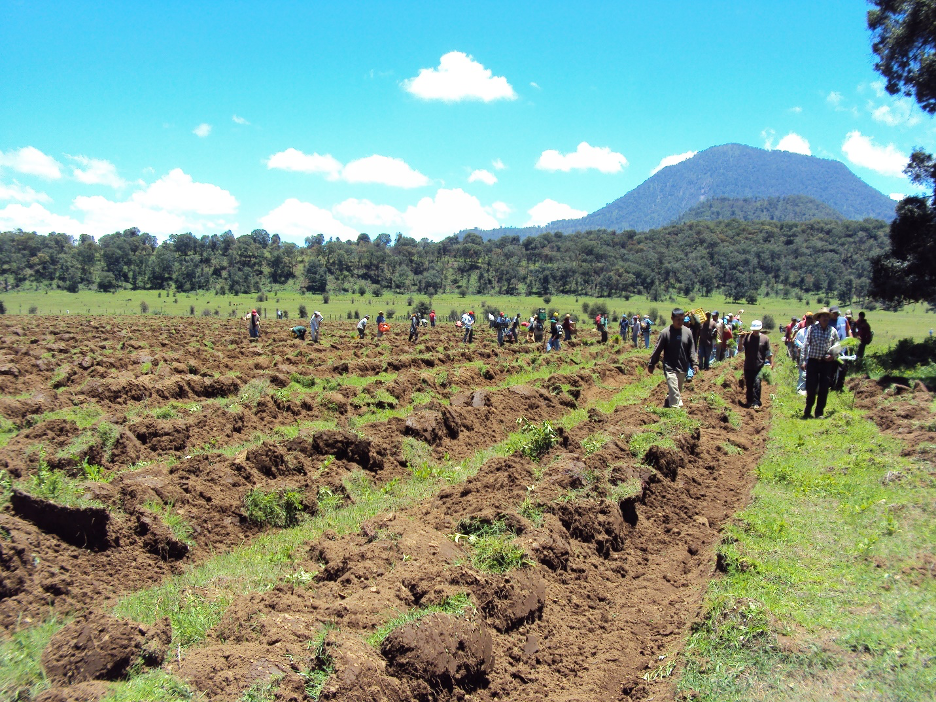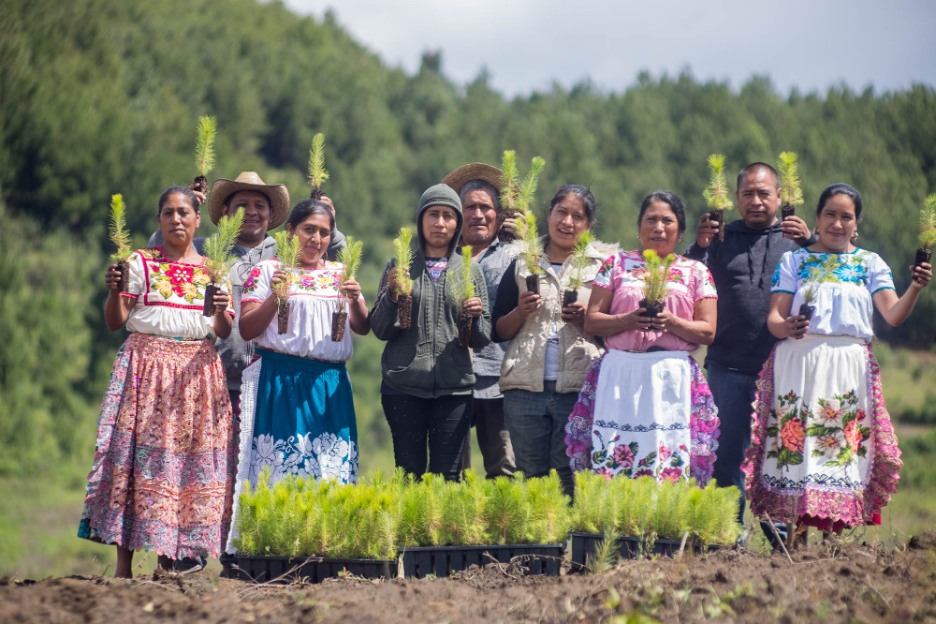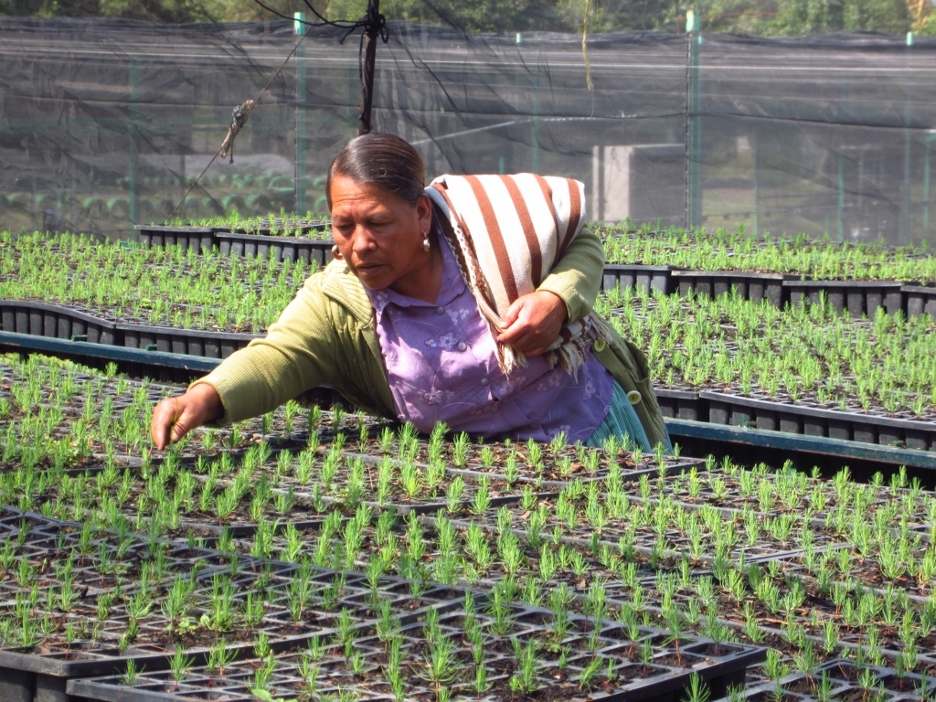Regenerating Forests and Communities – Ejido Verde Makes the 2020 50 to Watch List
While taking a backseat to the health crisis in the last few months, climate change is increasingly shaping our daily experience with wildfires, droughts, hurricanes and pollution. In the face of this worsening crisis, we are witnessing the rise of a fresh generation of innovators creating new technologies and business models that could solve the plastics crisis, regenerate soils, seed new forests, create climate-positive buildings and end desertification. Now in its second year, Cleantech Group’s 50 to Watch list recognizes these extraordinary trailblazers fighting the good fight, for all of us.
A Solution in Focus

We are thrilled to announce that Ejido Verde is making our 2020 50 to Watch list. Ejido Verde partners with local forest communities and farmers in Michoacán, Mexico to grow pines to regenerate forests and harvest resin. It designs plantations on degraded land to maximize resin production, and provides assistance and training to local communities. We talked to Shaun Paul, its CEO, to hear more.
What global challenge made you start Ejido Verde?
The global pine resin market is valued at $10 billion and has extensive applications in multiple industries including automotive, materials and chemicals, as well as in food and beverages. Mexico is the fifth largest producer of pine resin globally, with about 90% being produced in the state of Michoacán. However, over the past 100 years, we have seen systemic deforestation that has led to a dramatic decline in availability of the raw material for this industry as well as a significant loss in biodiversity.
In 2009, the resin industry started talks with local suppliers- who are primarily forest communities- to determine how they could ensure an increased supply in response to global demand. This gave rise to our commercial regenerative farming model.
What does your regenerative model look like on the ground?
Our model looks to regenerate pine forests on degraded soil while bringing long-term prosperity to local farmers and forest communities.
We take into consideration the cultural context of farming in Michoacán, with all the traditional uses and customs of land usage that have been around for generations. We work with resin tappers who are predominantly of indigenous origin and help provide them with long-term sources of income.
In Mexico, 51% of land is communally owned due to agrarian reform that occurred about 85 years ago. Families, therefore, have user rights over farms but do not own the land outright. Traditional financing organizations do not accept this as a form of guarantee, resulting in chronic underinvestment in rural communities and forestry in Mexico. We cannot donate trees to family farms either, as historically those plantations have very low survival rates and do not receive proper care and attention.
We start by identifying plots that have been abandoned or are unproductive after being overused. We bring in tractors to decompactify the soil and work to restore its fertility. We source seeds from native trees that have two to ten times better yield than the global average of pine trees and develop them into seedlings in our partner nurseries. About 70% of our costs are from the local labor that we use to prepare the land, plant the seedlings by hand and maintain the farm. We adapt plantations to the plot’s technical attributes including species of pine tree, soil elevation and type. Depending on the plot and objectives, we also look at introducing companion crops, such as mushrooms, alongside the pine trees to enable a symbiotic relationship and stimulate overall growth.

We approach communities that own the land and identify interested farmers that are keen to take on a long-term project in partnership with us. This is another benefit, as we create a significant number of jobs in the community.
What is the lifecycle of such an agroforestry model?
Our biggest investment is during the first two years of the process, during which time we plant and maintain the trees and ensure they are nurtured properly. Our trees typically take ten years to reach at least 18 centimeters in trunk girth, when the resin can start to be tapped. The tree then produces resin for its natural lifetime, typically around 80 years.

We provide a finance and technology package to landowners, everything from seedlings to training on how to tap a tree. The community does not have to put down any money as we provide ten years of expenses for the labor, seedlings and tools. In exchange, we ask for 10% to 15% of production value as return on investment. This amounts to about 3,500 kilos in resin which can be spread out over a ten year period, from year 11 to year 20. We also have a future purchase contract with the community to buy the remaining resin at market price which we sell to industry.
The communities are obliged to keep the plantation for between 20 – 30 years, after which they can decide to cut the trees down for wood or keep tapping resin.
Are you monetizing the ecological services that you are providing?
We had an aspiration to finance our model using carbon credits and we are continuing to work on that. We are following the Voluntary and Community Sector/Climate, Community& Biodiversity standards to measure and verify the carbon sequestered in the pine forests. Our internal estimate is about 200 tons of carbon sequestered every day, and we are a net-negative company in term of emissions. Our regenerative dashboard monitors our impact and we are now looking at some 133,000 tons of carbon sequestered since we began. With our aim of establishing 12,000 hectares, we can sequester 6 million tons of carbon over a 30 year period.
We are also looking at monetizing both the biodiversity restored as well as the carbon sequestered and are in conversations with multilateral organizations.
What is your vision for the next five years or so in terms of success?
Our goal in the next five to ten years is to have 12,000 hectares under management, with 3,000 family farms adopting our model and creating about 10,000 full-time jobs. We are growing significant volumes of pine resin to be tapped and we will be working with our industry partners to expand their markets for derivatives made from pine resin.

We anticipate a shift away from the reliance on natural forests for industries such as the pine resin industry and pulp and paper industry. Instead, we are moving towards sourcing from regenerative forests in order not to deplete and degrade the few native ecosystems we have left. We already have Brazil using similar models, but we are hoping other countries will adopt our model as it is more capital efficient than traditional forestry which requires the purchase of large land tracts. In 10 years, we will certainly be selling carbon credits and other agricultural products, and we hope to see a positive structural and transformational economic impact in the communities we are working in.
Was there anything along the way that almost made you want to quit in this effort?
Yes! I’d say one of the biggest challenges was getting managers of biorefineries, which transform pine resin into commercial commodities and other specific ingredients, to be seriously interested in the work we are doing. Managers of these chemical refineries are understandably risk-adverse and subsequently skeptical of radical innovation. So, we have had to address some resistance to partner with Ejido Verde.
There have been moments where I’ve had to remind myself that this work is worth it, that innovation is always a learning journey with a lot of trial and error, and that effort needs to be put in to build bridges and educate potential skeptics.
Find Out How Leading Innovators Are Averting the Climate Crisis
 Our latest report will bring you closer to the innovators and decision makers committed to finding and bringing to market solutions to the life-threatening challenge of the climate crisis.
Our latest report will bring you closer to the innovators and decision makers committed to finding and bringing to market solutions to the life-threatening challenge of the climate crisis.
- Meet a new generation of innovators working to deliver sustainable change.
- Discover case studies of companies in agtech, electrification and plastic.
- Get to know cleantech investors boldly pushing for change.


